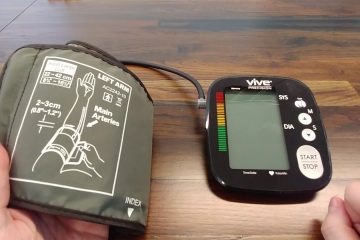Physical Symptoms of Trauma: More Than Just Emotional Pain

Trauma is often perceived primarily as an emotional or psychological challenge. While it is true that its impact on mental health cannot be overstated, focusing solely on the emotional symptoms overlooks a crucial aspect of trauma’s reach — its physical manifestations.
Understanding these physical symptoms is essential for a comprehensive approach to healing. In this post, we delve into the often-overlooked physical dimension of trauma, emphasising the importance of holistic treatment strategies.
The Body Keeps the Score
The old phrase “the body keeps the score”, coined by Bessel van der Kolk, underscores the profound impact trauma has on an individual’s physical well-being. Trauma can leave its imprint on our bodies, manifesting in various, sometimes surprising, physical symptoms. These symptoms can serve as important indicators of unresolved trauma, making it essential to address both the mind and body in the healing process.
Common Physical Symptoms of Trauma
- Chronic Pain: Unexplained aches and pains, particularly in the back, neck, and head, can be a manifestation of trauma. The body, in its attempt to cope with unresolved stress, might express its distress through pain.
- Gastrointestinal Issues: Trauma can disrupt the digestive system, leading to symptoms such as nausea, diarrhea, constipation, or other gastrointestinal discomforts. This is often a result of the body’s fight or flight response being activated too frequently.
- Fatigue and Sleep Disturbances: Difficulty falling or staying asleep, nightmares, and feeling chronically fatigued are common among those who have experienced trauma. These symptoms can stem from both the mental and physical exertion of coping with trauma.
- Heightened Startle Response: A body that’s been through trauma may be in a constant state of heightened alertness, leading to an exaggerated startle response – this can be taxing and contribute to overall fatigue.
- Immune System Suppression: Chronic stress from trauma can weaken the immune system, making the body more susceptible to infections and illnesses. This is a direct link between emotional distress and physical health vulnerability.
The Path to Healing
Recognising these symptoms as potentially linked to trauma is the first step toward healing – it’s crucial to approach recovery with a strategy that addresses both the mind and body. Therapies such as EMDR (Eye Movement Desensitisation and Reprocessing), Somatic Experiencing, and trauma-informed yoga can be effective in addressing the physical symptoms of trauma.
Equally important is the role of professional support – a trauma psychologist in Melbourne can offer specialised therapy that integrates understanding of both the psychological and physical impacts of trauma. These professionals are equipped with the tools to help individuals navigate their recovery journey, fostering healing in a holistic manner.
Final Thoughts
Trauma extends beyond emotional pain, manifesting in physical symptoms that can significantly impact an individual’s quality of life. Recognising these symptoms is crucial in seeking appropriate care and support – by addressing both the emotional and physical effects of trauma, individuals can embark on a comprehensive path toward healing. It’s a journey of reconnecting the mind with the body, fostering resilience, and ultimately, regaining a sense of wholeness and well-being.









